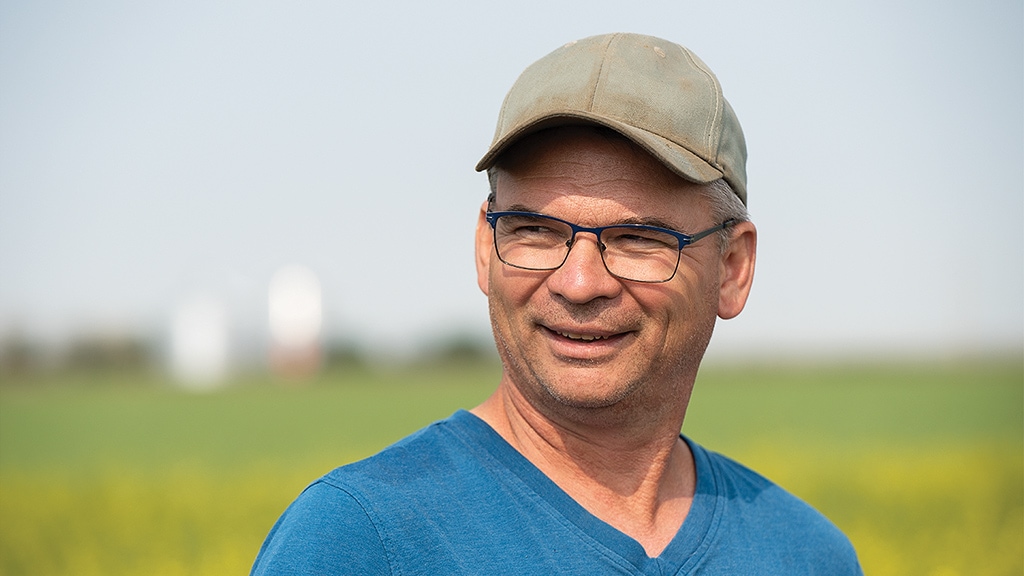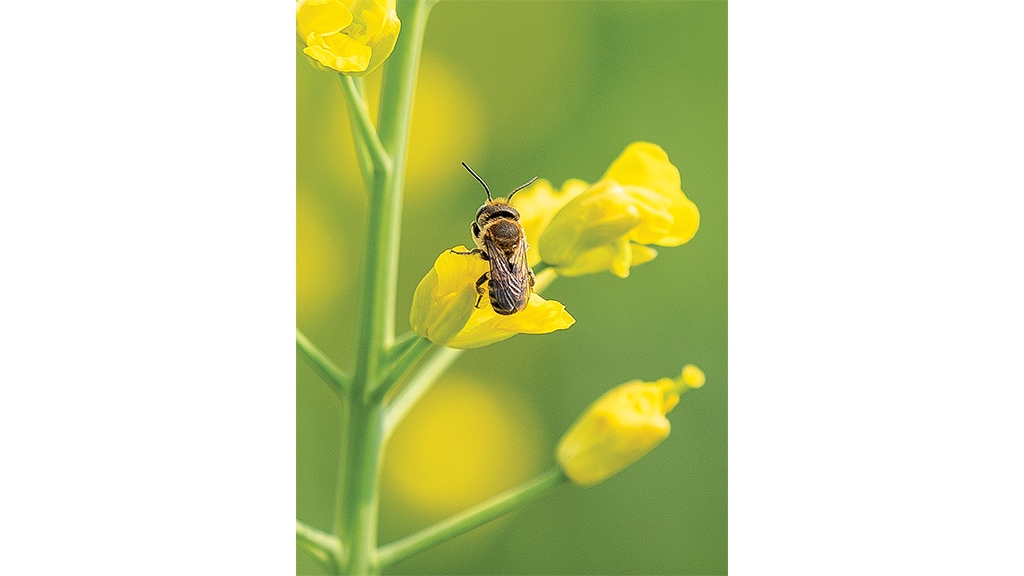
Leafcutter bee shelters line the center of an irrigated hybrid canola seed field near Brooks, Alberta.
Agriculture, Education June 01, 2024
Another Important Bee
Leafcutter bees help pollinate seed crops.
by Katie Knapp
"They are the most beautiful insect in the world," says Art Folkerts about the leafcutter bee, a lesser promoted but very beneficial relative to the honeybee.
Horticulturalists and agriculturalists have been using leafcutter bees for alfalfa pollination across the inland west since as early as the 1960s. Leafcutter bees have more recently also been found to be beneficial for canola seed, blueberry, and cranberry pollination.
The common name of 'leafcutter bee' for the Megachile rotundata is quite literal. The females gather nectar, pollen, and small leaf cutting into tunnels where they then lay their eggs. The plant material acts as a cocoon for the larvae to develop within.
In commercial operations, farmers remove the larvae at the end of pollination season and overwinter them in climate-controlled storage. Come spring, the next generation hatches and develops into new bees in time to go to work in the fields throughout the summer.
Compared to the honeybee, the leafcutter bee is generally non-aggressive and solitary. They do not have a caste system—no queen. With relatively short lifespans (females only about six weeks and males just two to three weeks), they are focused on reproduction rather than producing something like honey. They are most active in midsummer temperatures and remain more active at warmer temperatures than honeybees do.
The most noticeable difference between honeybees and leafcutter bees is their home. Both prefer to live and nest together, but leafcutter bee shelters are large—upwards of 10 foot x 10 foot x 10 foot—for the females to have space to lay their eggs in individual tunnels. Many of these shelters are bright blue, making them hard to miss in an otherwise yellow sea of flowering canola.
Above. Art Folkerts' family has been raising livestock and crops in this region since 1967. Leafcutter bees have been part of their operation since the early 2000s.
Becoming a bee farmer. "I was tired of my cash crops subsidizing the livestock side," Folkerts says.
He saw an opportunity in the early 2000s to get out of the hog business, add acres, and diversify his family's southeastern Alberta farm by also raising seed crops. With that, came the need for pollinators. That's when Folkerts effectively switched from being a pig farmer to a bee farmer.
"We seem to have the right mix of climate, wind, and irrigation to successfully grow seed crops here and have had really good results with leafcutter bees as our pollinators," Folkerts says.
Currently, he farms about 1,000 acres near Brooks, Alberta, of which about 40 percent are seed crops needing bees. He raises enough leafcutter bees to cover his acres and contracts honeybees through the seed company to add an additional pollination source to some fields. Any surplus leafcutter bees he raises are sold through a broker.
"This spring when I had my cocoons tested for pests, one sample had 4,000 bees in one pound of material," Folkerts explains.
The Canadian Leafcutter Bee Council runs a cocoon testing center in Brooks, Alberta, to analyze samples from producers across Canada and the United States. Leafcutter bees are especially susceptible to a small wasp called Pteromalus venustus and a fungal disease called Chalkbrood. X-ray testing identifies any presence of these and other mechanical or pest damage and determines the female-to-male ratio and percentage of live bees.
"It is still a fair amount of work to raise bees," Folkerts says. "But it is nothing like pigs. I can go away for a while in the winter now without worry." ‡
Read More

AGRICULTURE, EDUCATION
Land of Extremes
1,500 years of tree ring data shows wild climate swings on the prairies.

AGRICULTURE, AG TECH
A Yield for the Record Books
Virginia corn grower does it again.


